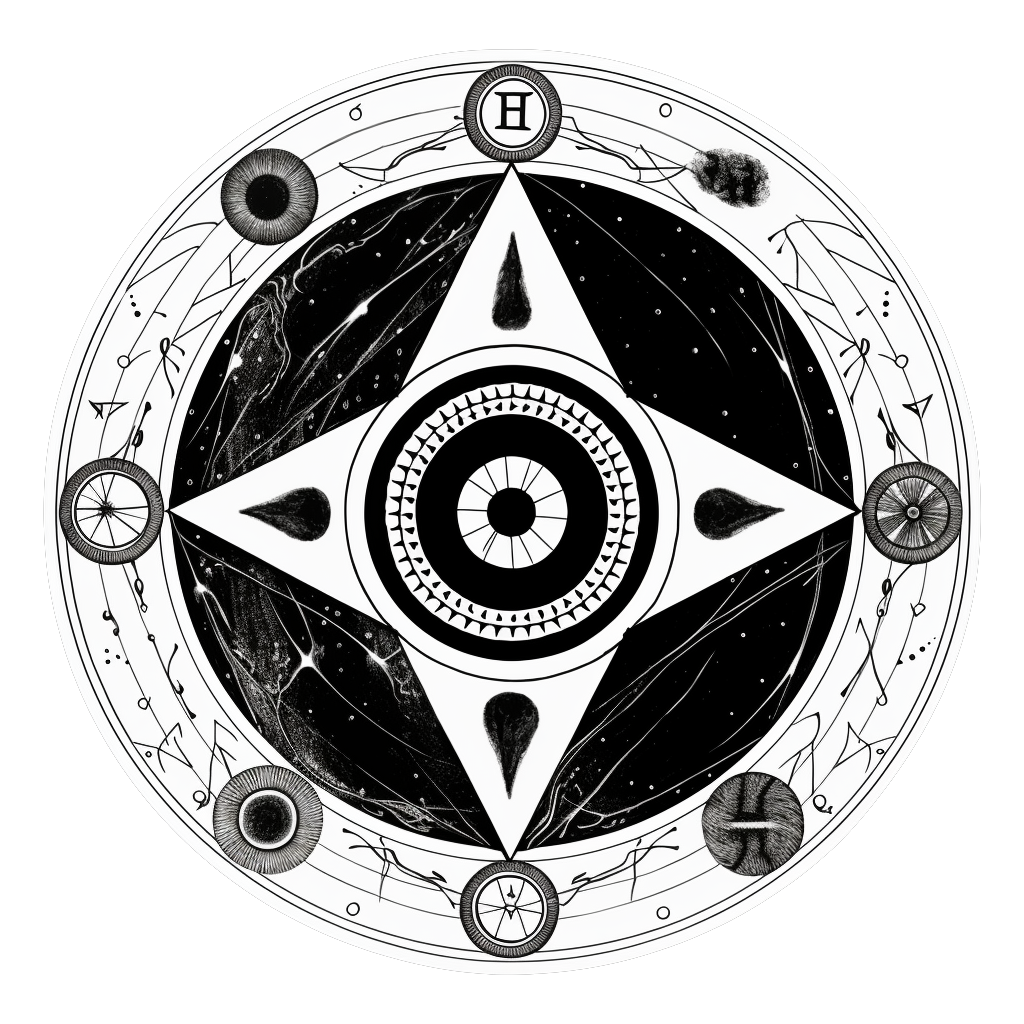The Augur’s Tenets
- This universe [this experiential reality] exists in the shape of the void–unperceived, empty of any distinction, unattainable by reasoning, unknowable–wholly immersed, as it were, in a deep slumber.
- What is now is only ever present as expressed, rapidly vanishing back into the void from which it springs–or from which it seems to spring.
- What presses reality from the void into the shape of existence is what the ancients have called sentience–the awareness of process, knowing, contemplation, and wonder.
- Eternal and chaotic, sentience is the sun which illuminates the now and imagines what is to come, the projection of the elements into formerly unarticulated shapes.
- In sentience there emerges a realization of an imagined past according to which the aware mark their existence in a linear guise.
- Sentient awareness imagines itself transcendent from the void, as articulated through both space and time–as timespace–yet is itself encompassed in the shape of the void.
- The sentients who called themselves the Foremost articulated their timespace, and its divisions, constructing from their awareness the shape of presence which was to be experienced wholly as the now–the present.
- The imagined past–what has been–as well as the imagined future–what is to come–are always already positioned relative to the assumption of a sentient present.
- The Foremost, as sentients, perceived their emergent reality not as a genesis, but as an always already manifesting existence.
- Among the Foremost there were Chronicles–the Watchers bound to singular realities who in their timespace actualize a linear existence.
- Among the Foremost there were Augurs–the Diviners unbound to the past who gaze into the infinite future of possible realities that stray from linear paths.
- The Chronicles and the Augurs reached into the void to evoke realities from the beyond into the waking present awareness.
- The evocation and articulation of reality emerges as awareness and the creation of meaningful reflections of experiences and the possibility of experiences.
- Creation is the articulation of boundaries with which to fashion explanations of sentience within the void–a process, that from which we continually emerge, and that to which we continually return to slumber once again.
- Since ancient times, the Foremost have carefully guarded their descendants; preserving the methods through which the Chronicles and Augurs engaged in their elaborate modes of exploration.
- The Chronicles depend on the linear awareness, the preservation and performance of the past.
- The Augurs see beyond the linear, into the many paths to come, the many emergent possibilities of dynamic existence.
- Since the sentience of future realities are never bound to any singular linearity, the Augurs realized both the potential of their sentience, and the power it could have over the Chronicles within every timespace.
- The Chronicles, bound to their linear existence conceptualized permanence in their imagined pasts as the quadrant of knowing, and realized power over the Augurs within singular linearities.
- No linearity can adequately reveal the generalized form or function of timespace, or the forms of combinations of forms and functions of timespace, wherein sentients exist within, subject to their own emergence.
- The Order of Chronicles emerged to preserve the sentience before, to peer into the distant past of one’s own path, to study, and solidify existential passage.
- The Order of Augurs was created to preserve the sentience beyond, to gaze into the unknown void and realize the realities that exist within.
- The Foremost decreed these many emergent realities were to be recorded as the Lore of Sentience.
- Though this universe exists in the shape of the void, from sentience emerges lore through which our understanding awakens.
- The primeval method of the Augur’s Lore actualizes the boundaries within the infinite multitudes of future possible realities.
